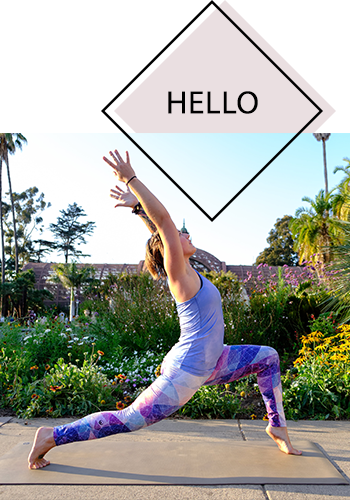A 12-Step Program for the Beginning Bikram Yogi: How and Why to Quit the Fidget
/
Um, how exactly do you expect to hold this if you're twitching all over the place?
I hate to admit it, but the other day another girl really got to me during Bikram class.
We’ve never met, I don’t know her, and it’s probably wrong to form an opinion about this chick without even having spoken to her…but man, you should have been there. It was ugly:
She couldn’t get through three seconds of class – during postures and in between them – without fidgeting. She was wiping sweat. She was checking herself out in the reflection of the side-wall window. She was adjusting her hair. She was squeezing her belly paunch and making dissatisfied faces at her own reflection. She was making eye contact with her friend across the room.
In short, she was doing everything but the postures themselves.
And dudes, it was pissing me off. When it comes to dealing with difficult emotions, anger’s not my forte. I don’t enjoy building up a large dose of fury within myself. And when I do, I’m generally not sure how to handle it.
And goodness knows: the heat in the Bikram studio is enough to make my blood boil and turn my face red – I don’t know about you, but I don’t need another reason to swelter. Not to mention, the 90-minute meditation is supposed to be a soothing sort of practice.
Short and sweet: you should be still – frozen, motionless, absolutely static and silent – for a pretty big chunk of class. Whether you’re technically in savasana or simply resting in between sets of the standing series postures, you should be a living statue!
By literal definition, finding stillness is as important as utilizing integrity and depth in the postures themselves. Heck, it’s inherent to their very name – asana refers not just to the physical fulfillment of the position, but also finding calm within that configuration. You arrange the different components of the body in a specific way, but what’s more: you do so for the purpose of achieving balance, promoting physical health, and attaining mental relaxation. It’s like the name of “standing separate leg head to knee pose” – the phrase “head to knee” implies that you must make contact between the exactly forehead and the exactly knee in order to receive the medical benefit of the posture. Not the nose. Not the chin. The forehead. In this same way, every asana requires the reaching of stillness. It’s not an option!
Reasons to Quit the Fidget:
1. Find peace. Bottom line. Isn’t this a big reason you’re stepping foot into the Torture Chamber, anyway?
2. Stop annoying the hell out of the yogis around you.
3. Balance. What a concept, right? And you were wondering why you couldn’t hold standing bow…
4. Energy. You’ll actually have more to put toward the real Bikram, rather than your frenzied fiddles.
5. You won’t feel so sorry for yourself! One of my favorite moments in yoga is when, right in the middle of class, an instructor randomly blurts, “Great, now stop looking so sad! Next set…” They slide that quick little sentence in with the other instructions like it’s part of the dialogue, when in reality it should be. How many times have you looked around the hot room to see some pretty miserably contorted facial expressions? Or made them yourself?
6. When you feel sorry for yourself, you quit sooner. So when you stop feeling sorry for yourself because you’re so tired from wasting energy fidgeting and because you couldn’t balance if you life depended on it (see #3, #4 and #5) – then you’ll actually be able to stay in the pose until “change” rather than pooping out early.
7. Your body actually needs that sweat you keep wiping away. One of my favorite instructors brings this up often, calling people out when they stop to reach for their brows, or worse, down for their towels.
8. You’ll be able to breathe better.
9. You leave the drama at the door. You get a chance to get away from our insane, insanely fast-paced world instead of allowing the madness in the door.
10. You learn discipline. You learn. Discipline. You. Learn. Discipline!
11. You stick together as a class, and you benefit from the energy of those around you. Holy crap, I can’t stand when people move at their own pace. And granted, at first I found it difficult to stick with the instructor and the rest of the yogis around me, but once you learn what a blessing this can be, people who throw it off become extremely pesky!
12. Uh, it’s part of the DIALOGUE. And what’s rule #1 in Bikram? Obey the freaking DIALOGUE!
So what happened with Miss Drama, with her jitters and spasms, her ridiculous song and dance, her sad faces when she couldn’t hit any of the postures with Bengal tiger strength? As a matter of fact, turns out none of my fierce, defiant glaring in her direction helped a damn thing. She just kept on squirming around like a restless worm. And she reminded me of another reason it does you no good to get distracted from those around you in the yoga room:
It just takes away from your own practice.
But hey, there was one redeeming factor. Crazy girl inspired me to stay for a second class.
It just so happened that my first one sucked so bad and I was so all over the place that I just couldn’t resist sticking around for the 7:30pm. And that, my friends, was an adventure in and of itself. Stay tuned for the next post!






